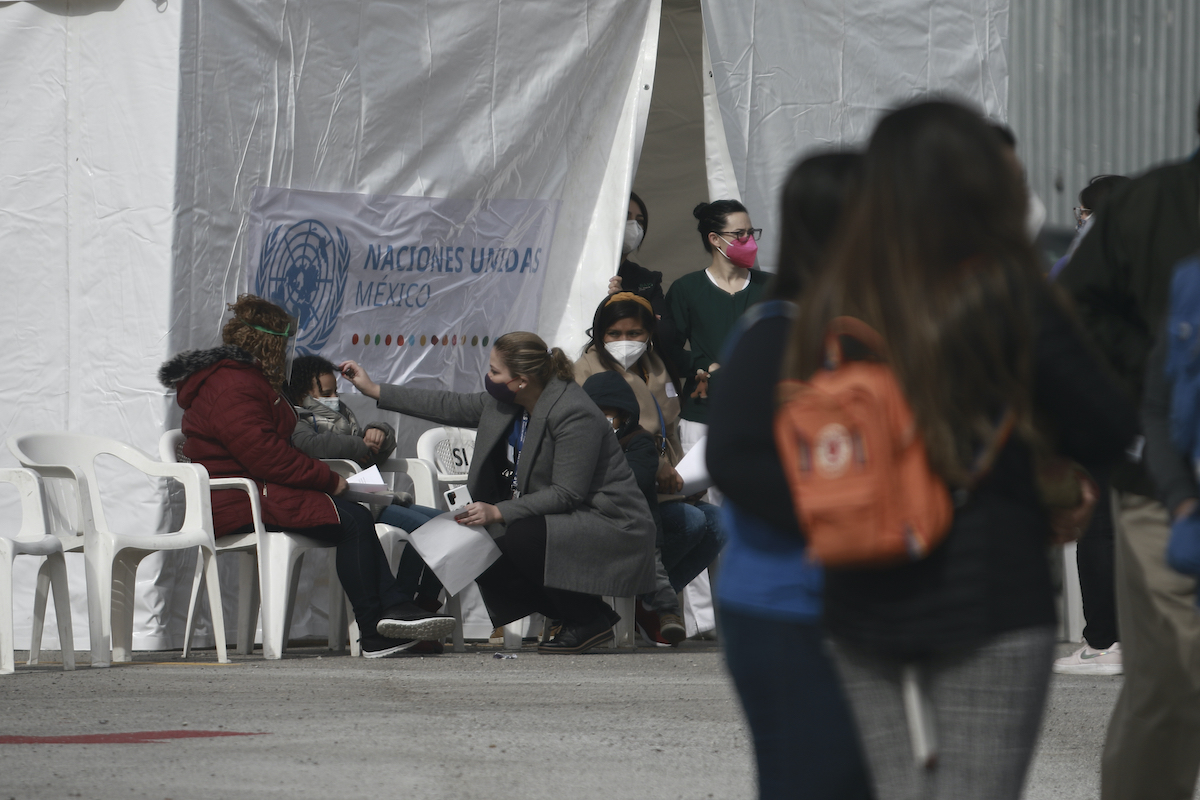

A member of the International Organization for Migration takes a child’s temperature before crossing the border into El Paso, Texas at the Leona Vicario shelter in Ciudad Juárez, Mexico, Friday, February 26, 2021. (AP Photo/Christian Chavez)
By MARÍA VERZA, Associated Press
MEXICO CITY (AP) — The processing of asylum seekers waiting to enter the United States expanded to a third border crossing Friday, even as nongovernmental organizations called for more effort to protect the thousands still in Mexican border cities.
A week after the U.S. government began processing those with active cases made to wait in Mexico during the Trump administration at a border crossing between Tijuana and San Diego, the process expanded this week to the Matamoros-Brownsville crossing and Friday to Ciudad Juárez-El Paso.
A camp of migrants on the banks of the Rio Grande in Matamoros was a particular priority for the Biden administration and Mexico. It holds about 750 people now, but the city is dangerous and camp residents were hard hit by frigid winter weather that affected Texas and northern Mexico this month.
On Friday, the second day of processing there, 100 asylum-seekers crossed from Matamoros. On Thursday, about two dozen were processed.
The acceleration came as Mexico Foreign Affairs Secretary Marcelo Ebrard met virtually with his counterpart U.S. Secretary of State Antony Blinken. Mexico also announced late Friday that President Andrés Manuel López Obrador and President Joe Biden would hold their first bilateral meeting Monday.
Mexico’s Foreign Affairs ministry said in a statement that among the topics to be discussed will be “the mechanisms for cooperation to address the structural causes of migration in northern Central America and southern Mexico.” They also plan to discuss strategies to deal with the COVID-19 pandemic and opportunities for economic recovery.
The organization Doctors Without Borders, which works along the migratory routes through Central America and Mexico, warned Friday that there are places where migrants remain at great risk.
The great majority of the 25,000 asylum seekers with active cases who were forced to wait out the process in Mexico under Trump’s so-called “Remain in Mexico” program, still have weeks or months of waiting ahead. The situation is further complicated by the COVID-19 pandemic, which has reduced capacity at shelters that provide a degree of safety for migrants.
Sergio Martínez, head of Doctors Without Borders in Mexico, called on both governments to remember that the migrants need protection while they wait, noting growing violence in border cities, including Piedras Negras and Nuevo Laredo.
“What we want to do from [Doctors Without Borders] is push the Mexican government to take the necessary steps to protect this population, who are its responsibility while they are in Mexican territory,” he said. The U.S. government must also collaborate since it created the situation, he added.
In September and October 2019, before the pandemic, the organization recorded that in cities like Nuevo Laredo three out of four migrants they registered said they had been kidnapped in the previous 10 days. Once the pandemic began they were not able to continue the level of monitoring, but believe the security risks have only grown as some local authorities have closed shelters citing public health concerns, leaving migrants without safe spaces.
Matamoros “is a drop in the bucket, the tip of the iceberg, and what really concerns us more are the other places on the border that don’t have even the protection of media attention” and where organized crime continues preying on migrants, he said.


